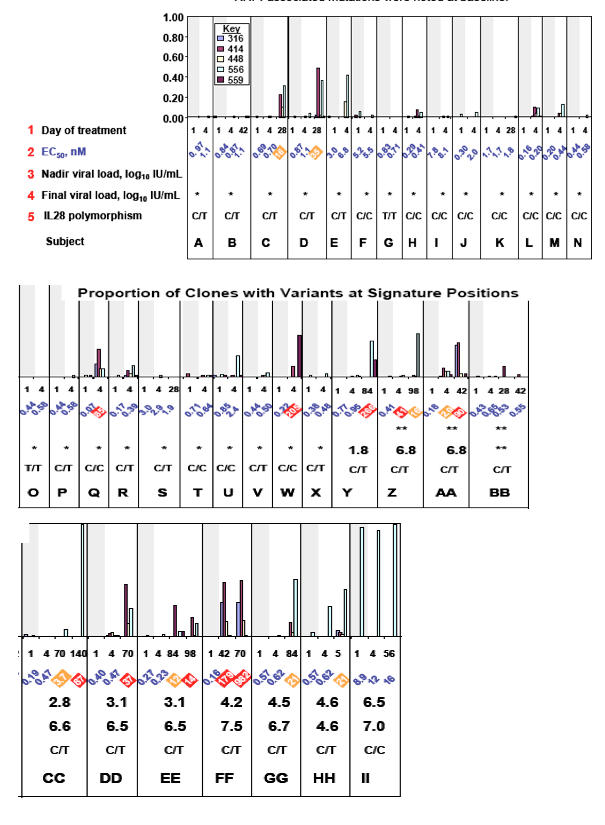 |
 |
 |
| |
Factors affecting HCV viral load response to the non-nucleoside polymerase inhibitors ABT-072 and ABT-333
|
| |
| |
Reported by Jules Levin
EASL 2011 Berlin March 31-April 2
Tim Middleton, Yupeng He, Jill Beyer, Isabelle A. Gaultier, Daniel E. Cohen, Thomas J. Podsadecki, Barry Bernstein, Christine Collins
Global Pharmaceutical Research and Development, Abbott Laboratories, Abbott Park, IL

BACKGROUND
ABT-333 and ABT-072 are nonnucleoside HCV NS5B polymerase inhibitors (NNPI) with potent in vitro activity against genotype 1a and 1b NS5B replicons.
These NNPIs were safe and well tolerated in studies in healthy volunteers.
Baseline and on-treatment phenotypic and genotypic resistance were determined as part of a 12 week study of efficacy and safety of ABT-333 and ABT-072.
Clonal sequence analysis was performed on 40 to 92 clones of the NS5B gene from samples for subjects receiving ABT-072 or ABT-333. Samples collected at days 1 and 4 of treatment were tested, along with the last sample collected with sufficiently high titer for analysis while viral load was declining, and selected rebound samples.
Variants were assessed at 5 amino acid positions where mutations have been previously shown to confer reduced susceptibility: 316, 414, 448, 556 and 559
The bulk population of amplified NS5B genes from a sample was expressed in a replicon, then transfected into Huh-7 cells that were treated with drug for 4 days. Phenotypic resistance was measured as the fold change in EC50 from baseline (Day 1).
Subjects with clonal sequence analyses at both day 1 and day 4 are included. Sequence analyses beyond day 4 was often not possible for subjects who experienced continued HCV RNA decline after day 4 with no viral rebound through week 12, as many post-day 4 samples could not be amplified due to low viral titer. USA



|
| |
|
 |
 |
|
|